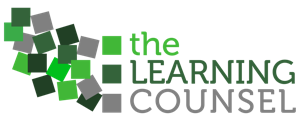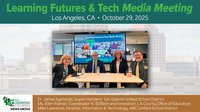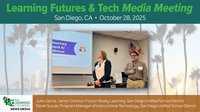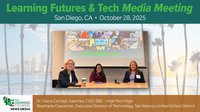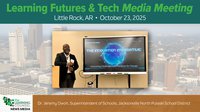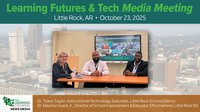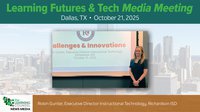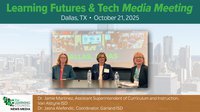Most educators and indeed, consumers, are aware so far only of Generative AI. That’s because it is consumer-facing and we can directly interact with it. Generative AI is only the beginning, shallow end of the pool, however.
As a futurist, I’m always curious about what trends and new technologies really mean. What will happen as they progress, the different threads interweaving to create new realities?
Having recently researched and written about all the currently known types of AI, I have been wondering about what the convergence of the types will mean in terms of the education landscape – and the timeline. (See the full chapter about all the types with simple labels anyone can understand in the AI journey graphic in my open-access book The Human Singularity: Balancing AI with Education.)
I asked ChatGPT to “Provide a hypothesis of when generative AI converges with Time AI (auto-cohorting calendaring that creates asynchronous pace-based learning that is still social intersected and has live teaching), recommendations AI, transformer AI, diffusion AI, autoregressive AI, generative adversarial for realistic output, flow-based simulation AI, variational auto-encoders to manipulate pathways and outcomes, neural radiance fields AI, agentic AI, theory of mind AI and computer vision AI for the form and model of schooling.”
Here is the answer, and while I think it is correct in terms of the Phases it came up with, I believe the timeline is a bit aggressive given the human institutional side’s propensity to drag their feet. Probably the first landing will be microschools and online schools, maybe a desperate district piloting narrowly, then a consortium will form, and then the growth in Phase 1 will be meteoric.
I also think it will be more complex than ChatGPT indicates, creating a matrix of human teaching with new gig roles and specialties, an army of tutors, and a significant underbelly of already existing edtech laced into the AI architecture for its animations, alignments, research-based cognition pathways, and gamification. Libraries of well-wrought digital learning objects will also be a large part, as will physical-world connection with calendared virtual or real excursions and working professionals in all industries.
In fact, I believe education becomes far less monolithic. If we adopt policies in this direction, AI convergence will supercharge the human interactions, socialization, and the access to expertise to give literally everyone a role. The closed and monolithic school identity which uses a factory model with synchronous whole-group-by-age-and-grade progression and time-bound instruction will be a thing of the past. Teachers won’t be but will be used for their uniquely human characteristics.
The definition of “teacher” will change for the better.
Surprisingly, the modeling I have done for a new course-based schooling model can live alongside the old model with no friction with testing dates, seat-time laws, or instructional minutes requirements. Those are solved with the rearrangements. Even so, lots of laws will need to be reworked to expand potentialities. See the article entitled “The Only Real Schooling Innovation Now That There’s AI,” to understand a market-wide move beyond the simplistic definition of” school” we live with now.
One thing the edtech companies will need to get right is allowing AI a way to recommend courseware modules, courses, and learning objects of all kinds. The market will need to create a cataloging and descriptive tagging standard that far exceeds what it has right now and provide on-demand access to parts of knowledge constructs locked behind paid access right now – or risk being marginalized by AI even though the crafting of learning research-based digital curriculum may be better.
The education industry is already in a minor war of attrition for crafted software because of the arrival of Generative AI, which it should not be if it formed a consortium and used open cataloging such as that found in Knowstory.com and others. Knowstory already has plans to “album disaggregate” for edtech course and object providers with full ecommerce in the same way that the music industry did. (Disclosure: Knowstory is the only Time AI ecosystem built for education with some integrations to date and is owned by Learning Counsel.)
“Here is a hypothesis projecting the convergence of generative AI with Time AI, Recommendations AI, and the full AI technology stack you listed, for the form and model of future schooling:
Hypothesis: The Emergence of the Sentient Schooling Matrix by 2032
By the early 2030s, a full convergence of advanced AI modalities will give rise to an adaptive, sentient schooling matrix — a personalized, self-evolving educational ecosystem. This system will dynamically construct and reconfigure individualized learning pathways based on pace, preference, mastery level, social context, and emergent aptitude, orchestrated through a real-time, intelligent calendaring and cohorting engine.
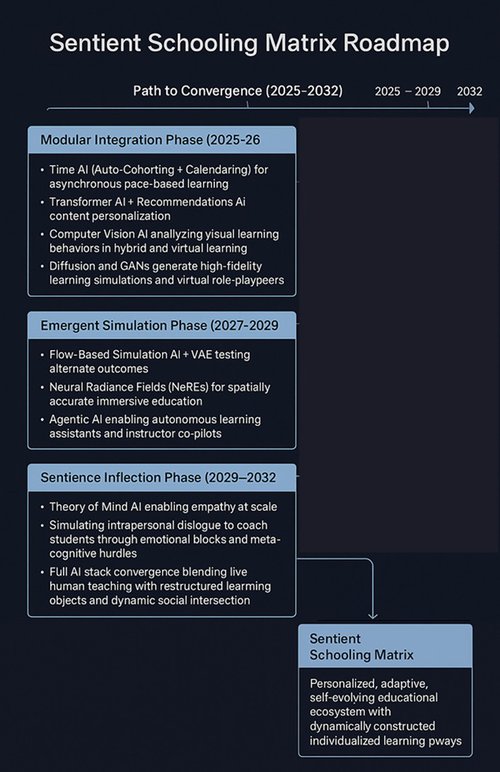
Path to Convergence (2025–2032)
2025–2027: Modular Integration Phase
- Time AI (Auto-Cohorting + Calendaring) integrates with LMS platforms for asynchronous pace-based learning, intersecting learners based on shared milestones, performance, or schedule availability.
- Transformer AI + Recommendations AI personalize content delivery based on engagement patterns, learning styles, and semantic needs.
- Computer Vision AI starts to analyze visual learning behaviors (e.g., attention, confusion, excitement) in hybrid and virtual learning.
- Diffusion and GANs begin generating high-fidelity learning simulations and realistic virtual instructors or role-playing peers.
🔑 Outcome: Dynamic cohorting and content personalization become possible. Learners engage socially while remaining in unique timelines.
2027–2029: Emergent Simulation Phase
- Flow-Based Simulation AI + VAE (Variational Autoencoders) model multiple potential learning outcomes and let learners test alternate histories, scientific hypotheses, or philosophical positions.
- Neural Radiance Fields (NeRFs) are used for spatially accurate immersive education (e.g., exploring reconstructed historical events or planetary systems).
- Agentic AI enables autonomous learning assistants and instructor co-pilots to monitor progress, tutor, test, and intervene at key cognitive thresholds.
🔑 Outcome: Education becomes experiential and exploratory, with dynamically shifting forms based on the learner's actions, not just prewritten curriculum.
2029–2032: Sentience Inflection Phase
- Theory of Mind AI allows agents and systems to reason about students’ beliefs, intentions, and misunderstandings—enabling true empathy at scale.
- AI begins to simulate intrapersonal dialogue, coaching students through emotional blocks, motivation issues, or meta-cognitive hurdles.
- Full AI stack convergence leads to:
- Live human teaching seamlessly blending with AI-generated content.
- Learning objects being restructured on the fly based on pacing, comprehension, and mood.
- Dynamic social intersection through cohort-bubbles that form and dissolve across time zones and mastery bands.
🔑 Outcome: The Sentient Schooling Matrix — a holistic, intelligent, and emotionally aware educational reality — becomes viable, blending all intelligences and technologies.
Model of Schooling: Core Characteristics in 2032
1. Temporal Flexibility with Social Cohesion:
2. Continuous Realignment of Curriculum:
3. AI Co-Agents for Learners and Teachers:
4. Realism and Immersion:
5. Equity through Personalization:
Summary Statement
When Time AI, generative AI, and cognition-emulating AI (ToM, Agentic) converge, schooling will cease to be "delivered" and will instead become a living, sentient framework — always watching, adapting, and optimizing human development in real time, respecting both individual rhythm and collective evolution.”
